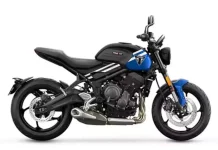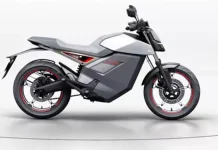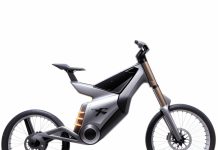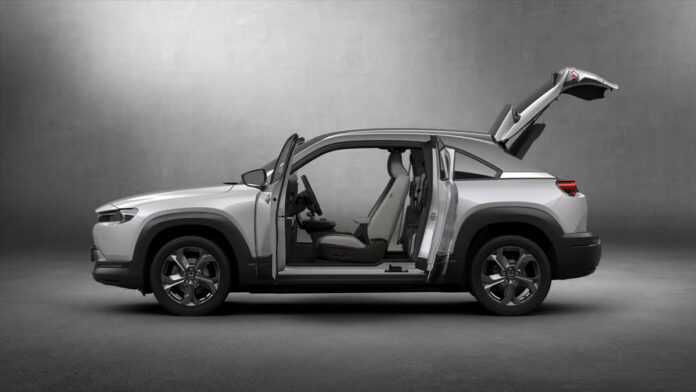Mazda’s New EV Strategy
The statements made by Masahiro Moro, CEO of Mazda, reflect a nuanced perspective on the electric vehicle (EV) market in the USA. His observations highlight several key points and challenges facing the EV industry:
- Market Share of EVs: Moro notes that EVs still represent a small fraction of the total automotive market in the USA, with their market share slowly increasing. This slow growth indicates that while there is interest in EVs, widespread consumer adoption is still in its early stages.
- Tesla’s Dominance: Tesla’s significant share of the EV market is notable. This suggests that Tesla has successfully tapped into certain market segments or has offered products and services (like their Supercharger network) that resonate well with consumers, distinguishing them from other EV manufacturers.
- Struggles of Other EV Manufacturers: The mention of other EVs not “taking off” and inventories piling up indicates broader challenges in the EV market beyond Tesla. This might be due to factors like range anxiety, pricing, lack of model variety, or brand loyalty to traditional automakers.
- Mazda’s Position in the EV Market: Mazda’s cautious approach and the discontinuation of the MX-30 EV in the USA reflect the company’s strategy and possibly its assessment of market readiness and infrastructure support for EVs.
- Challenges in EV Adoption: Moro points out the lack of charging infrastructure as a major impediment to EV adoption. This is a common concern, as the availability of convenient and fast charging stations is crucial for making EVs a practical choice for more consumers.
- Broader Industry Trends: The cutting back on targets and investments by carmakers suggests a recalibration of expectations in the EV market. This could be due to several factors, including economic conditions, technological challenges, or slower-than-expected consumer adoption rates.
- Consumer Choice and Infrastructure: Moro’s statement about getting to zero emissions being up to consumer choice and social infrastructure underlines the interplay between consumer behaviour, government policies, and support infrastructure in the transition to EVs. This reflects the complexity of transitioning an entire sector from fossil fuels to electric power.

EV Market Growth
Key Analysis
The key points from Masahiro Moro’s analysis of the EV market in the USA can be summarized as follows:
- Limited Market Penetration of EVs: Despite growth, electric vehicles still account for a small percentage of total car sales in the USA, indicating that the market is still in an early adoption phase.
- Tesla’s Market Leadership: Tesla’s success and dominance in the EV market highlight its effective strategy and consumer appeal. This contrasts with the struggles of other EV manufacturers to gain significant market share.
- Challenges for Other Automakers: Non-Tesla EVs face challenges in gaining traction, as indicated by accumulating inventories and modest sales figures. This suggests issues with market fit, consumer preferences, or competitive positioning.
- Mazda’s Cautious EV Strategy: Mazda’s approach, including the discontinuation of the MX-30 EV in the USA, reflects a conservative and perhaps more market-responsive strategy, possibly due to their assessment of current market conditions and infrastructure readiness.
- Infrastructure as a Key Barrier: The lack of widespread and reliable charging infrastructure is identified as a major obstacle to broader EV adoption, emphasizing the need for more significant investments in this area.
- Industry Recalibration: The general trend of automakers revising their EV targets and investments points to a more cautious and realistic approach towards the EV market, likely influenced by current consumer behaviour and economic factors.
- The Role of Consumer Choice and Infrastructure: The transition to EVs is not just about vehicle technology but is also heavily dependent on consumer preferences and the development of supporting infrastructure, like charging stations.
Moro’s analysis suggests that while there is momentum in the EV sector, significant challenges remain. These include the need for better infrastructure, addressing range anxiety, and aligning EV offerings with consumer expectations. The industry’s response to these challenges will likely shape the pace and nature of the transition to electric mobility.
Tesla’s Dominance
Analyzing the electric vehicle (EV) market, particularly in the context of Masahiro Moro’s comments and the broader industry dynamics, reveals several pros and cons:
Pros of Electric Vehicles
- Environmental Benefits: EVs produce zero tailpipe emissions, contributing to reduced air pollution and a smaller carbon footprint compared to internal combustion engine vehicles.
- Reduced Operating Costs: Electric vehicles generally have lower fuel costs compared to gasoline vehicles. Electricity is often cheaper than gasoline on a per-mile basis.
- Lower Maintenance Requirements: EVs have fewer moving parts than traditional vehicles, leading to potentially lower maintenance costs (e.g., no oil changes, and fewer brake replacements due to regenerative braking).
- Performance Benefits: Many EVs offer quick acceleration and smooth operation, providing a different and often more enjoyable driving experience.
- Energy Independence: EVs can reduce dependence on oil, contributing to energy security.
- Innovation and Technological Advancements: The push towards EVs is driving advancements in battery technology, charging infrastructure, and automotive design.
Cons of Electric Vehicles
- Limited Range: Many EVs still suffer from range anxiety, where drivers fear running out of battery without access to a charging station.
- Charging Infrastructure Needs: The current charging infrastructure is inadequate in many areas, leading to inconvenience, especially for long-distance travel.
- Higher Initial Costs: EVs often have a higher upfront cost compared to similar gasoline vehicles, although this can be offset over time through fuel savings and tax incentives.
- Battery Lifespan and Replacement Costs: The battery is a significant part of an EV’s cost, and its performance can degrade over time. Battery replacement can be expensive.
- Electricity Grid Impact: A rapid increase in EV usage could strain existing electricity grids, especially if the transition to renewable energy sources does not keep pace.
- Environmental Impact of Battery Production: The production and disposal of EV batteries pose environmental challenges, including the mining of rare earth elements and battery recycling/disposal issues.
- Limited Choices for Consumers: While growing, the range of EV models available is still limited compared to traditional vehicles, particularly in certain segments like trucks and affordable cars.
- Long Charging Times: Charging an EV can take much longer than refuelling a gasoline vehicle, although advancements in fast-charging technology are improving this.
Conclusion
While EVs offer significant environmental and operational benefits, there are still several challenges and limitations that need to be addressed to increase their appeal and feasibility for a broader range of consumers. The progress in technology, infrastructure, and market adaptation will be key in determining the future landscape of electric vehicles.
Moro’s comments provide insight into the current state and challenges of the EV market in the USA, highlighting the need for a multi-faceted approach to encourage EV adoption, including enhancing infrastructure, addressing consumer concerns, and developing compelling EV offerings by automakers.





































